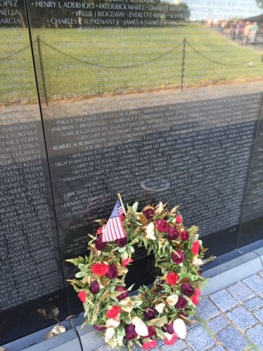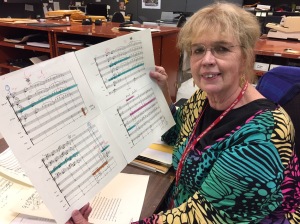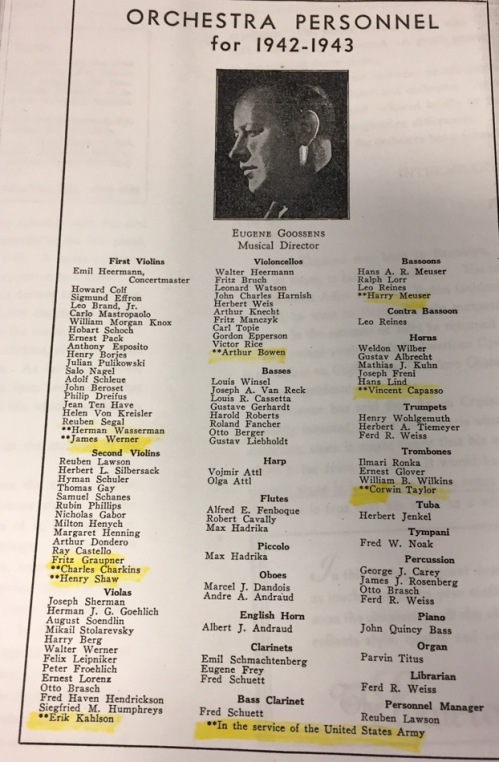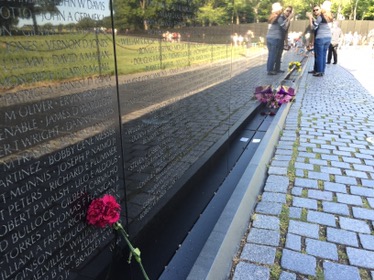 I will never hear this piece quite the same way again. Writing about Aaron Copland’s “Fanfare for the Common Man” was a fascinating journey that had several unexpected turns. First, I must thank my editor Amy Wilson, who asked a few months ago, “What about that Fanfare?” Thinking that everyone already knew all about it, I soon discovered that, no, that wasn’t the case. First of all, the CSO “commission” was honorary. Who knew that Copland wasn’t paid a dime to write it? The clincher was the date on the manuscript: Nov. 6, 1942. It might be a nice piece to run around election day, so I got to work.
I will never hear this piece quite the same way again. Writing about Aaron Copland’s “Fanfare for the Common Man” was a fascinating journey that had several unexpected turns. First, I must thank my editor Amy Wilson, who asked a few months ago, “What about that Fanfare?” Thinking that everyone already knew all about it, I soon discovered that, no, that wasn’t the case. First of all, the CSO “commission” was honorary. Who knew that Copland wasn’t paid a dime to write it? The clincher was the date on the manuscript: Nov. 6, 1942. It might be a nice piece to run around election day, so I got to work.

There were many books to read, interviews to conduct and permissions to obtain. First of all, my profuse thanks to the Copland Fund for Music for granting us permission to publish Copland’s manuscript with the story. And to the CSO for opening doors so that I could inspect Erich Kunzel‘s performing score that he used in his Telarc recording (many thanks to librarian Mary Judge) and meet with maestros Louis Langrée and John Morris Russell for an illuminating conversation about the music.
 There were wonderful stories that unfortunately ended up on the cutting room floor. Marie Speziale‘s memory of growing up hearing Copland’s “Fanfare” as the theme to a TV show as a kid, and then learning it later under the esteemed and legendary Ernie Glover at CCM was one such story. I’m posting the original program roster so that today’s brass musicians can trace their genealogy from those original CSO’s brass and percussion players. Both Henry Wohlgemuth and Herbert Tiemeyer came up in conversations. Russell notes it eloquently in my printed interview (as well as the video) without naming names, that many CSO musicians studied with those players, or with teachers of those original players.
There were wonderful stories that unfortunately ended up on the cutting room floor. Marie Speziale‘s memory of growing up hearing Copland’s “Fanfare” as the theme to a TV show as a kid, and then learning it later under the esteemed and legendary Ernie Glover at CCM was one such story. I’m posting the original program roster so that today’s brass musicians can trace their genealogy from those original CSO’s brass and percussion players. Both Henry Wohlgemuth and Herbert Tiemeyer came up in conversations. Russell notes it eloquently in my printed interview (as well as the video) without naming names, that many CSO musicians studied with those players, or with teachers of those original players.
And Marc Wolfley noted that he still performs the piece on occasion with the original bass drum that was played in the world premiere. Astounding.
 For me, the most wonderful moments came in the quiet surroundings of the Music Division of the Library of Congress, where I opened box after box from the Aaron Copland Collection. My thanks also go to Mark Horowitz, the Music Division’s senior music specialist, for making my visit possible and offering helpful guidance.
For me, the most wonderful moments came in the quiet surroundings of the Music Division of the Library of Congress, where I opened box after box from the Aaron Copland Collection. My thanks also go to Mark Horowitz, the Music Division’s senior music specialist, for making my visit possible and offering helpful guidance.
I couldn’t believe I was touching the original score and sketches with my hands. As I turned its fragile pages, my heart was in my throat. I loved reading his letters, not only from Eugene Goossens, but from other luminaries, as well.
I was grateful that the day before, I had taken a long walk the entire length of the National Mall so that I could see and feel the impact of all the memorials from our nation’s wars: World War II, Korea and Vietnam.
 That experience gave me such a different perspective as I studied the music. I am forever grateful to CCM interim dean bruce d. mcclung for his remark that this fanfare is like Maya Lin’s memorial to the Vietnam War — because it consists of a long wall and scores of names. It is all the more powerful because it is about the common soldiers who were killed in that war, and not a monument to a president or general. Like Copland’s “Fanfare.”
That experience gave me such a different perspective as I studied the music. I am forever grateful to CCM interim dean bruce d. mcclung for his remark that this fanfare is like Maya Lin’s memorial to the Vietnam War — because it consists of a long wall and scores of names. It is all the more powerful because it is about the common soldiers who were killed in that war, and not a monument to a president or general. Like Copland’s “Fanfare.”
Then there was the stunning video by Carrie Cochran and Meg Vogel to accompany the story. They had a vision… and it was partly executed by Meg climbing to the top of the Roebling Suspension Bridge to film footage. And by asking three CSO trumpeters to meet at the river at sunrise to play the Fanfare’s theme. Again, astounding.
 My thanks also go to Carol Motsinger for finding the story behind the mural that has Copland’s “Fanfare” overlooking Washington Park. At the 11th hour, as pages were being designed and we lacked a good cover photo, my thanks go to Rasputin Todd for helping me brainstorm an image, and to Clay Sisk for his beautiful and moving execution.
My thanks also go to Carol Motsinger for finding the story behind the mural that has Copland’s “Fanfare” overlooking Washington Park. At the 11th hour, as pages were being designed and we lacked a good cover photo, my thanks go to Rasputin Todd for helping me brainstorm an image, and to Clay Sisk for his beautiful and moving execution.
You can see the video and read the story here.

Thank you. The work that Ernest Glover, and then Betty Glover did for trombone players who studied at CCM carries on by how they played, how the taught, and the professionalism they instilled in their students. Betty and Ernie changed my embouchure, my approach to listening and practicing in a few short weeks during the summer of 1966, and that allowed me to have a successful career as a trombone player. I owe it all to them and their student Paul Pillar. Kenneth Kappel CCM MM in Trombone 1975
LikeLiked by 1 person